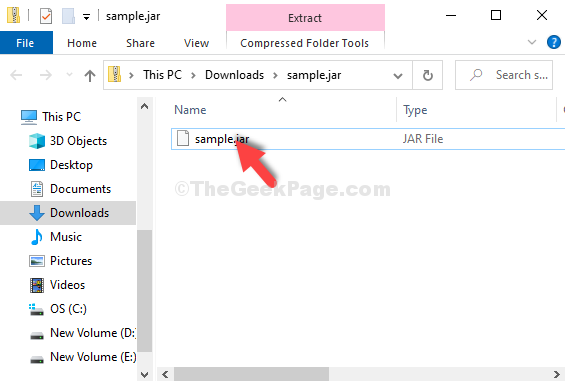
- #I HAVE USED JARFIX BUT I STILL CANT OPEN JAR FILES HOW TO#
- #I HAVE USED JARFIX BUT I STILL CANT OPEN JAR FILES ZIP FILE#
- #I HAVE USED JARFIX BUT I STILL CANT OPEN JAR FILES UPDATE#
- #I HAVE USED JARFIX BUT I STILL CANT OPEN JAR FILES ARCHIVE#
- #I HAVE USED JARFIX BUT I STILL CANT OPEN JAR FILES FULL#
I haven't yet been able to verify the support for non-baseline TIFF flavors in this plugin, but I assume at least baseline TIFFs should be fully supported. ImageIO.write(image, 'TIFF', outputTIFF) modify image (compose, resize, sharpen, etc). That means, using Java 9 or later, the following code will just work, without any extra imports or dependencies: BufferedImage image = ImageIO.read(inputTIFF) //.
#I HAVE USED JARFIX BUT I STILL CANT OPEN JAR FILES FULL#
Please see the installation instructions for further details, or file an issue (with full details) if you can't make it work.Īccording to JEP 262: TIFF Image I/O the TIFF plugin that used to be part of JAI will be available as part of the Java SE, starting from Java 9.
#I HAVE USED JARFIX BUT I STILL CANT OPEN JAR FILES HOW TO#
#I HAVE USED JARFIX BUT I STILL CANT OPEN JAR FILES UPDATE#
This section shows you how to update the contents of an existing JAR file by modifying its manifest or by adding files.

When extracting files, the Jar tool makes copies of the desired files and writes them to the current directory, reproducing the directory structure that the files have in the archive. You can use the Jar tool to unpack a JAR file.

You can display a JAR file's table of contents to see what it contains without actually unpacking the JAR file. This section shows you how to use the Jar tool to package files and directories into a JAR file. This section shows you how to perform the most common JAR-file operations, with examples for each of the basic features: Creating a JAR File To invoke an applet packaged as a JAR file To run an application packaged as a JAR file (requires the Main-class manifest header)

To extract specific files from a JAR file
#I HAVE USED JARFIX BUT I STILL CANT OPEN JAR FILES ARCHIVE#
Because the Java Archive tool is invoked by using the jar command, this tutorial refers to it as 'the Jar tool'.Īs a synopsis and preview of some of the topics to be covered in this section, the following table summarizes common JAR file operations: Common JAR file operations Operation To perform basic tasks with JAR files, you use the Java Archive Tool provided as part of the Java Development Kit (JDK). These tasks are among the most common uses of JAR files, and you can realize many JAR file benefits using only these basic features.Įven if you want to take advantage of advanced functionality provided by the JAR file format such as electronic signing, you'll first need to become familiar with the fundamental operations.
#I HAVE USED JARFIX BUT I STILL CANT OPEN JAR FILES ZIP FILE#
JAR files are packaged with the ZIP file format, so you can use them for tasks such as lossless data compression, archiving, decompression, and archive unpacking.


 0 kommentar(er)
0 kommentar(er)
